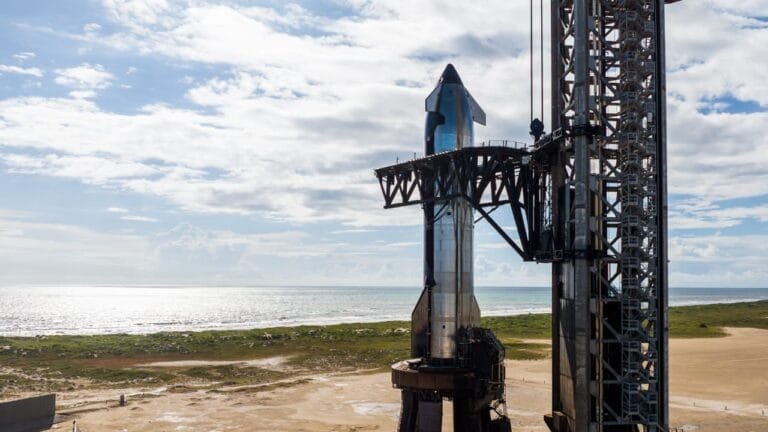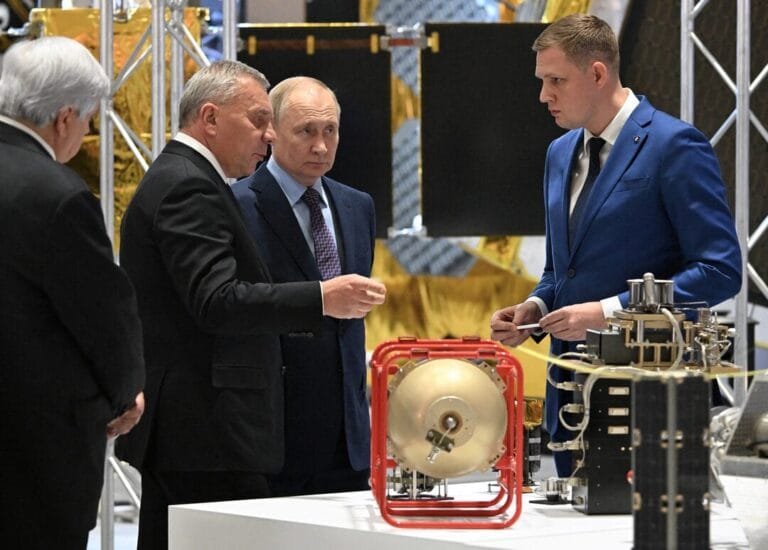
The LSST camera installed at Chile’s Vera Rubin Observatory, built to capture the universe like never before.
Imagine a camera that captures images of galaxies, architecture and infinite space in ways never possible before. One such amazing device has been created which is the world’s largest and most powerful digital camera called the LSST camera and is installed at the Rubin Observatory located on the Vera Sea in Chile.
Why the LSST Camera Is the World’s Largest Digital Eye
On a similar note, the sensor of this camera is about 3.2 gigapixels! That is 320 crore pixels which is a reference to your smartphone’s camera, usually at 12, 48 or 100 megapixels (1.2 crore, 4.8 crore or 10 crore pixels). This camera can take about 300 times more detailed images. To see such big pictures, you will get more than 1500 HD TV screens simultaneously.
The camera will take images of the entire southern sky every 3-4 nights for the next 10 years. These are images of the same area over and over again. This will make it easier to spot changes that scientists can then compare on different nights in the same place. This can help tell which star is exploding (supernovae), which planet is shaking, which asteroid is moving, or which new star is appearing. The “Legacy Survey of Space and Time” (LSST) named a special digital marketing. It includes not only the position of them in the sky, but also the history of the changes in them over time. It is the data of billions of entrepreneurs that this survey will identify about 20 billion (two trillion) galaxies, 17 billion (1.7 trillion) stars and millions of solar system objects (planets, asteroids, comets). And will collect their data.
How the LSST Camera Explores the Invisible Universe
Scientists are hoping to seek answers to many big questions from the data received from this amazing machine. The mystery of dark matter and dark energy that about 95% of the universe is not visible to us. Scientists call it dark matter (invisible matter) and dark energy (unknown energy), which is accelerating the expansion of the universe. LSST cameras will try to find answers to these big questions by studying the distribution of these cameras and the attraction of their light (gravity architectural stabilization).
It will help to understand the nature and quantity of mysterious creatures. This is the biggest goal of this project. The birth and evolution of galaxies is that this camera shows pictures of billions of galaxies, which are of different ages and located at different distances (which means looking at different times). This helped the scientist to know how galaxies were formed, how they were developed, how they resemble each other and are sculptures. The treasure of the solar system, which discovers thousands of new asteroids (asteroids) and comets (comets) from near the Earth. Some of these things can become dangerous for the Earth.
LSST Camera’s Mission in Unlocking Space Science
It is very important to find out in time. Also, it is the discovery of new bodies in the outer region of our solar system, such as the Kuiper belt. The life cycle of stars camera will capture events such as supernova explosions (surface end) and gamma-ray bursts (high energy wavelengths). By studying these memoirs we agreed to learn more about the life and death of the stars How do they dodge heavy elements (such as gold, platinum) that are also present on our planet. The structure of the Milky Way, this detailed gallery of our own galaxy, the Milky Way. This told us how our galaxy is formed, how it is layered, and the stars, gas and dark matter present in it.
How the LSST Camera’s Gigantic Images Help Science
The sensor samples of the strange camera are such that they can capture even the light filled with extremely faint and broken tomb, in which it was difficult to see earlier. It is like seeing the flame of a candle from thousands of kilometers away. Wide field of view As mentioned earlier, it covers very large pieces of the sky in a single shot. This eliminates the need to take pictures of small models again and again and the whole sky is scanned quickly. Which is similar filters have 6 huge filters which are of different colors (or wavelengths of light) like blue, red, green, infrared (heat rays) etc.
There are different colors in them The scientists can find out how far away an object is, what is its level, what elements are present in it. And super-fast data sharing. Remember, this camera sends a single image every 15-20 seconds.Takes huge pictures! It can produce more than 15 terabytes of data (equivalent to thousands of high-definition movies) in one night.Scientists have built extremely powerful computers and software systems to handle, process, extract useful information from this huge data, and deliver it. This technical challenge is also huge in itself.
LSST Camera’s Benefits for Everyday People and Science
Scientific progress First of all, it will revolutionize astrophysics and cosmology. Understanding concepts like dark matter and dark energy can change the fundamental laws of physics. Protection of the Earth Early detection of dangerous asteroids and comets will give us time to plan their defense Technological innovation The technology developed to build such huge and sensitive cameras, handle their data and analyze it will also have an impact on fields like computer science, image processing, artificial intelligence (AI) and sensor technology. Similar technologies may be behind future improvements in your phone’s camera.
Education and awareness This project will make amazing and huge pictures of the universe public. This will increase people’s interest in astronomy, especially among the younger generation. Common people will also be able to access this data on the Internet and try to discover something new themselves. Understanding our place It will give us a deeper understanding of our place in the universe. Understanding how unique and tiny our galaxy, our solar system and our Earth are in this vast and mysterious universe broadens our thinking.
Challenges Facing the LSST Camera and Rubin Observatory
Flood of data Collecting, storing, processing and analyzing such a huge data is a huge challenge in itself. It requires special software and supercomputers. Maintaining absolute accuracy in taking pictures repeatedly is important so that even the smallest changes can be captured. The builders constructed the observatory in a very dark and clear place, but even then sometimes clouds or moonlight can interfere with data collection.
Conclusion: LSST Camera Begins a New Astronomical Era
The LSST camera at the Vera C. Rubin Observatory is not just a camera. It is an amazing example of human curiosity and technical skill. It is giving us the opportunity to see the universe at a new, unprecedented depth and speed. Things that were previously hidden from our sight, changes that were too slow or objects that were too blurry, will now become clear in front of this giant digital eye. Over the next ten years, this camera will record the most detailed “movie” in the history of the universe. It can help us solve deep mysteries like dark matter and dark energy, discover the dangers and treasures hidden in the backyard of our solar system, and shed new light on understanding the life cycle of stars and galaxies.
that can opening new doors of knowledge not just for scientists, but for all of humanity. It reminds us that we are just a tiny part of a vast, dynamic and amazing universe, and our journey to understand its depths is just beginning. When this camera becomes fully operational, a new and exciting chapter will be added to our understanding of the universe. Get ready to see the next amazing pictures of the universe.







1 thought on “LSST Camera: The Largest Digital Eye on the Universe”